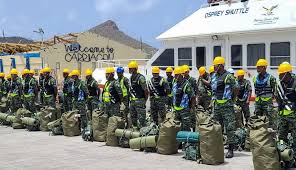Since 2020, Region 3 (Essequibo Islands–West Demerara) has seen remarkable strides in healthcare accessibility through the establishment of five new rural health centers. These facilities have been strategically placed in underserved communities such as Wakenaam, Leguan, and the riverine settlements of the Essequibo Islands to reduce travel times and provide timely care to thousands of residents. This investment aligns with the Guyanese Government’s ongoing commitment to equitable health access for all citizens, regardless of geography.
The addition of these health centers marks a significant shift from reliance on centralized facilities in Vreed-en-Hoop or West Demerara Regional Hospital. For decades, communities like Leguan and Wakenaam faced logistical challenges in accessing basic and emergency care—often requiring boat travel across rough waters or long delays in receiving services. With the launch of local health centers, services such as maternal and child health, chronic disease management, vaccination, and emergency response are now available closer to home.
According to the Ministry of Health, over 15,000 residents in Region 3 now have direct access to healthcare within their communities (Ministry of Health, 2024). In Wakenaam alone, the health center now accommodates an average of 800 patient visits monthly, demonstrating how local infrastructure relieves pressure on regional hospitals while improving health outcomes.
This progress also reflects the government’s broader Health Sector Strategy 2021–2025, which emphasizes primary care expansion, human resource development, and decentralization. The Ministry has concurrently improved health worker distribution, increasing nurse and medex deployments to island and riverine posts, with incentive packages to retain professionals in remote areas (Health Sector Strategy Report, 2023).
The Guyanese Government, through public investment and international partnerships, continues to prioritize universal health coverage. Support from agencies like PAHO/WHO has further strengthened diagnostic and pharmaceutical supply systems in these rural centers (PAHO Guyana Country Cooperation Strategy, 2022).
Not just buildings—these centers represent a deeper transformation in how care reaches people. In areas long excluded from modern health systems, the construction of local clinics signals dignity, security, and government responsiveness.
This is what real progress looks like: from promises to action, from isolation to inclusion. The people of Region 3 now experience what many in urban centers take for granted—care within reach, and a healthier, more hopeful future.
- Modern Infrastructure, Modern Nation: Guyana’s Nationwide Connectivity Drive
- GUYOIL Lands KLM Jet Fuel Contract as Guyana Expands its Aviation Reach
- Transforming Healthcare Access Across Regions 4, 5, and 6: Real Progress by the Guyanese Government
- Coach Troy Wright’s Grass-Roots Blueprint Is Changing the Face of Youth Football




